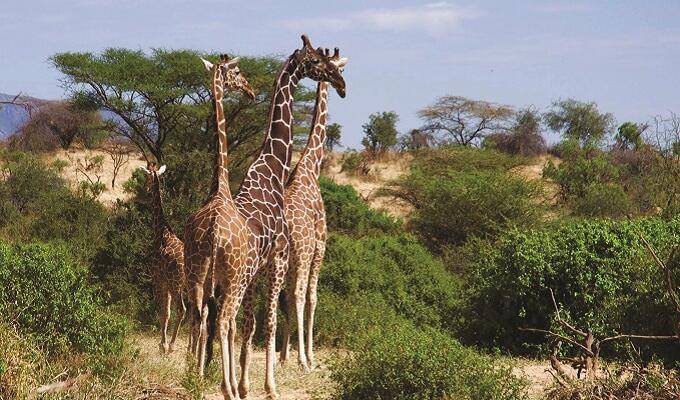



Maasai eco-lodge creates win-win for humans and animals alike
For the past 23 years, Kenya’s Il Ngwesi II Group Ranch has been a model of community-based tourism and sustainable wildlife conservation
Tourists who visit the Laikipia district north of Mount Kenya, between fertile highlands to the south and vast arid plains stretching north, do not only come to experience our eco-lodge, the Maasai hospitality and the stunning scenery they also come to see its wildlife.
Il Ngwesi II Group Ranch is a Maasai-owned and run ranch covering almost 9,000 hectares and one of the 13 group ranches in the area. In the early 1990s, following an offer by the neighbouring Lewa Wildlife Conservancy, Il Ngwesi became the first Maasai Group Ranch of its kind to join the organization on a journey of conservation and community development. The Conversancy argued that by setting aside some of their land for wildlife conservation and tourism-related business ventures, the Maasai could raise income for the community.
Community elders agreed to set aside 80% of their grazing land for conservation because the 8,000-strong Il Ngwesi population only practiced a limited amount of agriculture in the highlands. Six years later, with funding from the United States Agency for International Development (USAID) through the Kenya Wildlife Service, the community built the Il Ngwesi Eco Lodge, fully managed and run by the local community.
Community-based tourism is significant to us because we earn income as service and product providers as well as employers. We were able to create jobs to provide an alternative source of income besides livestock keeping for over 40 local women and men (with more than 90% from the community) working at the lodge and in security. Women from the community sell handicrafts to our guests and the revenue we make from the lodge goes back to the community in terms of much-needed school bursaries, building water projects, clinics and school infrastructure.
School attendance and education levels in the area are low compared to other parts of the district and to Kenya generally. Improving access to quality education is critical to enable the Il Ngwesi Maasai to engage on an equal footing in local, national and international debates that affect them. Being very traditional means that the Maasai’s attitudes towards the value of education are mixed, and specific cultural practices such as early marriages for girls, Moranism (warrior initiation rites for boys) and a nomadic way of life do not easily make room for education. However, this is changing, and many community leaders now wish to see their children properly educated.
Donations from individual well-wishers and partnerships with national and international non-governmental organizations have also provided some funds for community projects, particularly for education, health, access to water and generating community-based incomes. The funds are used to promote community buy-in and are essential for the long-term sustainability of our products.
A model leading to worldwide recognition
Over the past 23 years, we have witnessed an increasing interest in Laikipia beyond wildlife conservation. We have seen how tourism can serve as a sustainable means to manage the land and protect its wildlife, as well as to build a sustainable future for its resident communities.
Our products have improved, and occupancy rates have increased. Visitors can visit the nearby cultural Maasai huts, called boma, as well as access information on camping and other local activities, such as camel rides. Staying at the lodge not only provides guests with stunning views of the landscape and wildlife, it also opens a unique window into Maasai life that is neither contrived nor over-commercialized.
Il Ngwesi is recognized both nationally and internationally as a rare example of a venture genuinely run by the community that makes a real contribution to wildlife conservation. Part of the area set aside for conservation has been fenced for the protection of endangered species and currently holds two white rhinos. The ranch continues to enjoy visibly increased numbers of animals, including elephants, giraffe, impala and the endangered Grevy Zebra. Predators include lions, leopards, cheetahs, hyenas, wild dogs, and jackals – all of which are central to the ranch as a tourist attraction and for the ecosystem.
We have hosted many famous people including members of the United Kingdom’s royal family. We have served as a model to our neighbours who help foster communities that value wildlife and see a purpose in acting as custodians of the land. This managed landmass is particularly essential for the conservation of habitat, humans and wildlife. And we are happy to be able to contribute to that.



